As tax season rolls around, it’s only natural that retirees in the Libertyville and Lake County, IL areas think about minimizing taxes! But nationwide, many retirees feel at most only somewhat knowledgeable about taxes in retirement – and many of those feel they have very scant information.
That’s understandable; taxes in retirement can be more complex than when you’re working. The best way to minimize taxes is a coordinated set of tax planning strategies.
Here are a few tax planning strategies to consider:
1. Plan your income sources to minimize taxation of Social Security benefits
There’s a popular myth that Social Security benefits aren’t subject to tax. But it is possible that a percentage of them will be if you receive income from other sources, such as part-time work. In other words, taxation depends on the amount of income you receive, not on the receipt of benefits itself. Plan your other income and Social Security benefits to minimize taxes as much as possible, and understand the taxation system.
Are you on the right financial path? Contact Prism Planning Partners today for a consultation!
Social Security benefits (1) are not taxed if you earned below $25,000 last year and are single (below $32,000 for married and filing jointly retirees). If you earned between $25,000 and $34,000 as a single filer or between $32,000 and $44,000 as a married filing jointly filer, 50 percent of your benefits will be taxed.
If you earned over $34,000 (if you’re a single filer) or $44,000 (if you’re married filing jointly), 85 percent of your Social Security benefits will be taxed.
It’s also important to manage when you take Social Security benefits. Your receipt of benefits can start at either 62 or your full retirement age (FRA), which is determined by birth year. But you can also defer taking benefits until the age of 70, the point at which you must take them. If you know you will receive significant income or still be working between the ages of 62 and 70, it may be prudent to defer Social Security benefits to minimize taxes.
The amount of benefits also rises roughly 8 percent every year between your FRA and 70, so you’ll receive a higher level of benefits. While not specifically a tax strategy, it can be very advantageous to maximize your Social Security payments and you may want to factor this into your decision on when to take them.
2. Consider converting traditional retirement accounts to Roth accounts
The tax treatment of traditional individual retirement accounts (IRAs) and 401(k)s differs markedly from the treatment of Roth IRAs and 401(k)s. Contributions to traditional accounts are tax-advantaged; tax-deductible for IRAs and taken pretax from paychecks for 401(k)s. When they are withdrawn at retirement, they are then taxed at your existing rate in the year of withdrawal.
Roth accounts, on the other hand, are not tax-advantaged at all in the year of contribution but yield big tax savings when withdrawn – because withdrawals, as long as you’ve held the Roth for at least five years, are not taxed at all. Given the fact that appreciation on both Roth and traditional accounts is tax-free, Roths may be a very good option for retirees.
So what happens if you’d like tax-free withdrawals but your funds are in traditional retirement accounts? It may be possible to convert traditional retirement accounts to Roth accounts. The money transferred from any traditional account will be taxed when you withdraw it from that account. However, once the tax is paid and the money is placed in a Roth, it grows tax-free from there, and it will be tax-free upon withdrawal.
Roth accounts possess another advantage. Traditional accounts are subject to required minimum distribution (RMD) rules that begin at the age of 72 (70½ if you hit that age before January 1, 2020). But Roths are never subject to RMDs, which makes the timing and amount of withdrawals entirely up to you.
It’s prudent to speak to a financial advisor about conversion strategies. A staggered and slow schedule of conversion may be the most appropriate strategy, depending on the amount converted.
3. Manage your RMDs
The Internal Revenue Service (IRS) (2) requires that all traditional retirement accounts be withdrawn on a schedule starting at 72 or 70½, depending on your age. If you don’t take your RMDs on time, you’ll be subject to hefty, and we mean hefty, tax penalties (up to 50 percent of the amount that should have been withdrawn). Plus, of course, all distributions will be taxed at your existing rate as well.
While withdrawals must begin at the mandated age, it’s also important to remember that you can take withdrawals before that. You can take withdrawals without penalty from tax-advantaged retirement accounts starting at the age of 59½.
Working with a financial advisor can help ensure that you take all withdrawals at the time most advantageous to you financially, which might include a combination of early withdrawals, traditional-to-Roth conversions, and well-planned RMDs at the appropriate time.
4. Maximize your deductions
Deductions are one of the most important tax planning strategies of working people – and believe us, that doesn’t stop once you retire! The more you can lower the figure the IRS terms your adjusted gross income (AGI), the less tax you will pay.
One of the best ways to lower it is to contribute to tax-advantaged retirement savings plans like IRAs and 401(k)s. You can contribute up to $7,000 annually to an IRA once you’re over the age of 50 and up to $26,000 to a 401(k). (3) These can be taken whether you itemize deductions or not.
The 2018 Tax Cuts and Jobs Act raised the standard deduction significantly, to $12,400 for single filers and $24,800 for those married and filing jointly. It’s also highly advantageous to retired people because those 65 or older receive an additional $1,650 for single people or $1,300 per spouse for a couple on the last day of the year.
But it’s also very much worth considering all your possible deductions before deciding whether to take the standard deduction or not. The following are other potential deductions to consider:
- Medical expenses (these must equal more than 7.5 percent of your AGI)
- Mortgage interest on mortgages up to $750,00 ($1 million if you had the mortgage before December 15, 2017)
- Real estate taxes up to $10,000
- Student loan interest
- Charitable contributions
Tax strategies are complicated, and the advantages of each depend on your income, assets, net worth, and goals. Working with a local fee-based CERTIFIED FINANCIAL PLANNER™️ Professional in conjunction with a tax professional to ensure that your strategies are optimal for you.
At Prism Planning Partners, we are CERTIFIED FINANCIAL PLANNER ™️ Professionals committed to facilitating important questions so that we can help you explore all of your opportunities. We offer a broad array of financial planning and consulting services for our clients-including retirement, investment, and estate planning.
Contact us today and let us illuminate your possibilities!
 Download our free eBook today!
Download our free eBook today!
Source:
IRS Retirement Benefits SSA Administration https://www.ssa.gov/benefits/retirement/planner/taxes.html
IRS Retirement Plan and IRA Required Minimum Distribution IRS https://www.irs.gov/retirement-plans/retirement-plans-faqs-regarding-required-minimum-distributions
IRS Catch up contributions https://www.irs.gov/retirement-plans/plan-participant-employee/retirement-topics-catch-up-contributions



